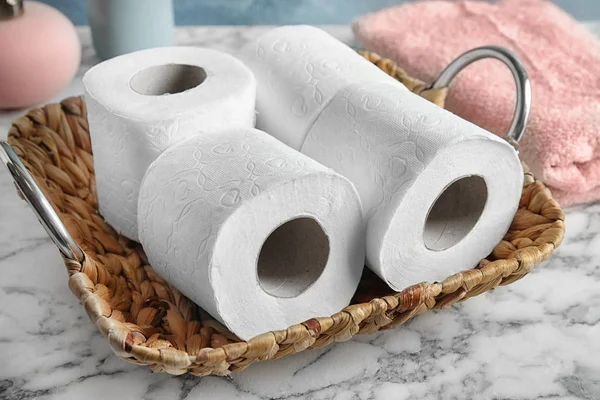In the realm of personal hygiene, toilet paper is an essential item that most people use daily without giving it much thought. However, for individuals with sensitive skin or allergies, choosing the right toilet paper can make a significant difference in comfort and health.
Enter hypoallergenic toilet paper – a specialized product designed to minimize irritation and allergic reactions. This article delves into the world of hypoallergenic toilet paper, exploring its benefits, manufacturing process, and impact on both personal health and the environment.
Understanding Hypoallergenic Toilet Paper
Hypoallergenic toilet paper is specifically created to reduce the likelihood of allergic reactions or skin irritation. Unlike standard toilet paper, which may contain various additives and chemicals, hypoallergenic options are made with fewer irritants and are often free from dyes, fragrances, and harsh chemicals that can trigger allergic responses.
What Makes Toilet Paper Hypoallergenic?
Several factors contribute to the hypoallergenic nature of toilet paper:
- Absence of additives: Hypoallergenic toilet paper typically lacks dyes, fragrances, and chlorine bleach, which are common irritants.
- Natural materials: Many hypoallergenic options are made from 100% virgin pulp or bamboo, which are less likely to cause reactions.
- Minimal processing: The manufacturing process often involves fewer chemicals and treatments.
- Softness without lotions: While some regular toilet papers add lotions for softness, hypoallergenic versions achieve softness through careful processing of natural fibers.
Benefits of Hypoallergenic Toilet Paper
The advantages of using hypoallergenic toilet paper extend beyond just avoiding allergic reactions:
1. Reduced Skin Irritation
For people with sensitive skin, eczema, or other skin conditions, hypoallergenic toilet paper can significantly reduce itching, redness, and discomfort in the delicate anal and genital areas.
2. Lower Risk of Allergic Reactions
By eliminating common allergens, these products decrease the likelihood of developing rashes, hives, or other allergic symptoms.
3. Gentler on Sensitive Areas
The softer texture and absence of harsh chemicals make hypoallergenic toilet paper more comfortable for everyone, not just allergy sufferers.
4. Environmental Considerations
Many hypoallergenic toilet papers are also eco-friendly, made from sustainable materials and produced with less environmental impact.
The Manufacturing Process
The production of hypoallergenic toilet paper involves careful selection of materials and a refined manufacturing process:
- Fiber selection: Manufacturers often use virgin wood pulp or bamboo, which are less likely to contain residual chemicals or irritants.
- Pulping: The fibers are broken down into a pulp using mechanical or chemical processes that avoid harsh chemicals.
- Cleaning: The pulp undergoes thorough cleaning to remove any potential irritants.
- Bleaching: If bleaching is necessary, oxygen-based or hydrogen peroxide methods are used instead of chlorine bleach.
- Forming and drying: The pulp is formed into sheets and dried using heat, avoiding the need for additional chemicals.
- Embossing and perforation: The toilet paper is embossed for softness and perforated for easy use, all without adding irritating substances.
Choosing the Right Hypoallergenic Toilet Paper
When selecting a hypoallergenic toilet paper, consider the following factors:
- Certification: Look for products certified by dermatologists or allergy associations.
- Ingredient list: Check for a simple ingredient list free from known irritants.
- Texture: Find a balance between softness and durability that works for you.
- Environmental impact: Consider options made from sustainable materials or with eco-friendly manufacturing processes.
- Price: Hypoallergenic options may be more expensive, so factor this into your decision.
Common Misconceptions
Despite its benefits, there are some misconceptions about hypoallergenic toilet paper:
- It’s only for people with allergies: While particularly beneficial for allergy sufferers, anyone can benefit from using hypoallergenic toilet paper.
- It’s not as effective: Hypoallergenic toilet paper can be just as strong and absorbent as regular options.
- It’s always more expensive: While some brands may cost more, there are affordable hypoallergenic options available.
Environmental Impact
Many consumers are increasingly concerned about the environmental impact of their purchases, and toilet paper is no exception. Hypoallergenic toilet paper often aligns with eco-friendly practices:
- Sustainable sourcing: Many brands use bamboo or recycled materials, reducing deforestation.
- Reduced chemical use: The minimal processing involved in production means fewer chemicals released into the environment.
- Biodegradability: Without added chemicals, these products may biodegrade more easily.
- Packaging: Some brands use minimal or recyclable packaging to further reduce their environmental footprint.
The Future of Hypoallergenic Toilet Paper
As awareness of allergies and environmental concerns grows, the hypoallergenic toilet paper market is expanding. Future developments may include:
- Advanced materials: Research into new, sustainable fibers that are naturally hypoallergenic.
- Improved production methods: Innovations in manufacturing to further reduce environmental impact while maintaining hypoallergenic properties.
- Customization: Toilet paper tailored to specific sensitivities or preferences.
- Wider availability: As demand increases, more affordable options may become available in mainstream stores.
Conclusion
Hypoallergenic toilet paper represents a significant advancement in personal hygiene products, offering a solution for those with sensitive skin while often aligning with environmental concerns. By understanding the benefits, manufacturing process, and considerations when choosing hypoallergenic toilet paper, consumers can make informed decisions that benefit both their health and the planet.
As we become more aware of the impact of everyday products on our well-being and the environment, innovations like hypoallergenic toilet paper play a crucial role in creating a more comfortable and sustainable future. Whether you have specific skin sensitivities or simply prefer a gentler product, hypoallergenic toilet paper offers a worthwhile alternative to traditional options, proving that even the most basic household items can be reimagined for the better.
